This guide defines various photographic formats from 1840-1920, providing examples from the Trent University Archives
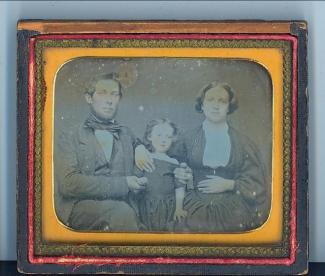
Daguerreotype
A very beautiful photographic process through which a positive image is produced on a thin copper plate with a highly-polished silver coating. Daguerreotypes are usually placed in a sealed package with a piece of glass and enclosed in a hinged leather shell. This process was first developed in 1839 and was popular from 1840 to 1860.
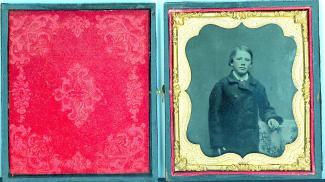
Ambrotype
This photographic process consists of a silver image in a collodion binder on an opaque, non-reflective support (unlike daguerreotypes). While placed on a black background surface, these always exhibit a positive image irrespective of the angle of view. They are often placed in hinged cases similar to daguerreotypes. The ambrotype process was patented in 1854. They were popular until 1865.
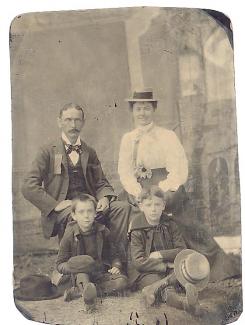
Tintype
First made in 1856, these images are easy to identify by their metal support (iron, not tin). They were a very common photographic product for over 50 years. The image was produced through a collodion emulsion process directly exposed in the camera, hence, there is no negative.
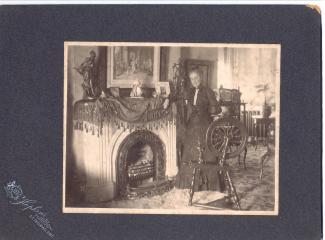
Albumen Prints
Early paper negatives produced prints which were commonly identified by the type of emulsion used. Albumen prints used a very thin paper and were usually pasted onto a card backing to prevent curling. This method of photo printing was invented in 1850 and was the most popular of all nineteenth-century photo processes.
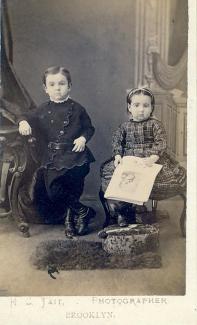
Cartes-de-visite
These small (63x100 mm) photos were produced by a variety of processes: albumen prints, gelatin printing-out paper, collodion paper. They were enormously popular during the 1860s and 1870s and Trent University Archives has hundreds of examples of these in various family papers. They were popular up until 1920.
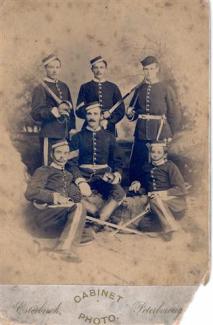
Cabinet Photographs
Along with the cartes-de-visite, the cabinet photograph (108x164mm) was the predominant commercial portrait of the nineteenth century. Many early examples were produced by the albumen paper printing process and characteristically show yellowing and fading. They were popular from 1860 to 1920.
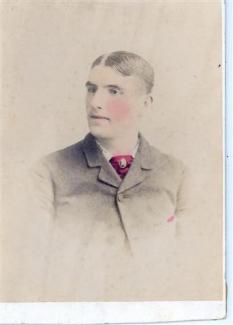
Cabinet Photographs
Some photographers hand-tinted the photos with somewhat startling results.
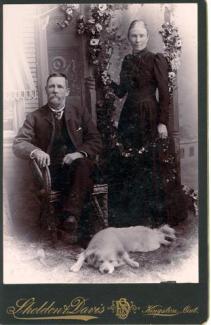
Cabinet Photographs
Later cabinet photographs (1880-1920) were produced by the collodion or gelatin printing-out processes. These often have a shiny surface and a purplish hue.
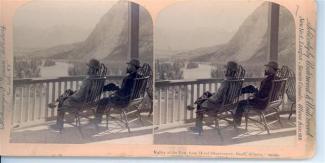
Stereographic Views
These photographs consisted of two identical images mounted side-by-side. They were viewed through a stereoscope which gave a 3-D effect. There were many series produced on such subjects as travel, W.W.1, Niagara Falls and so forth. They were popular from 1850 to 1920.
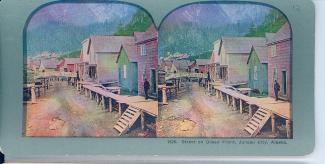
Stereographic Views
Some publishers offered coloured stereographs.
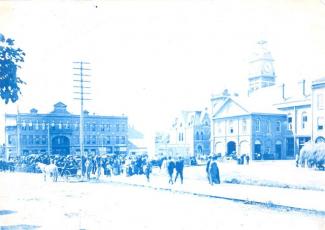
Cyanotype
This process produces a matte, single-layer, blue-hued positive image. The process is identical to that producing blueprints. Cyanotype prints for purposes other than maps and architectural drawings were popular from 1880 to 1920 though the process was discovered much earlier in 1842. This cyanotype shows Water Street, Peterborough, Ontario around 1900.
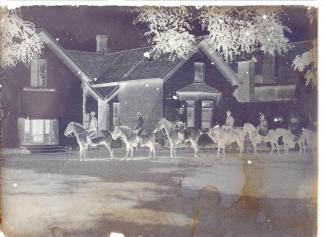
Glass Negatives
Thin, sharp-edged negatives were produced by a gelatin dry plate technique. Thicker glass negatives with ground edges were produced by a collodion process. All are subject to breakage, water and heat damage but the images are of superb quality and Trent University Archives has hundreds of examples of these. Most were produced from 1850 to 1920.
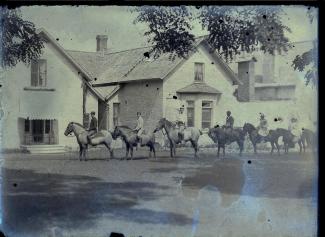
Glass Negatives
Digitizing glass negatives poses a problem. A good quality image can be produced by reversing the negative on the platen.
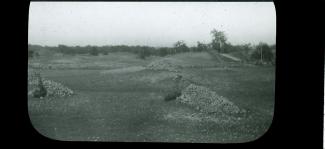
Lantern Slides
These glass slides were used extensively for teaching purposes from 1900 to 1915.